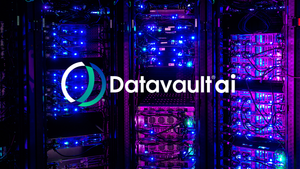
The semiconductor industry, the foundational bedrock of our increasingly digital world, is undergoing a profound transformation. Faced with mounting pressure from regulators, investors, and an environmentally conscious global populace, chipmakers are aggressively pivoting towards sustainability and green initiatives. This shift is not merely a corporate social responsibility endeavor but a strategic imperative, driven by the industry's colossal environmental footprint and the escalating demands of advanced technologies like Artificial Intelligence. The immediate significance of this movement lies in its potential to redefine the very essence of technological progress, ensuring that the relentless pursuit of innovation is balanced with a steadfast commitment to planetary stewardship.
The urgency stems from the industry's notoriously resource-intensive nature. Semiconductor fabrication facilities, or "fabs," consume gargantuan amounts of energy, often equivalent to small cities, and vast quantities of ultrapure water. They also utilize and generate a complex array of hazardous chemicals and greenhouse gases. If current trends continue, the IC manufacturing industry could account for a significant portion of global emissions. However, a proactive response is now taking root, with companies recognizing that sustainable practices are crucial for long-term viability, supply chain resilience, and competitive advantage in an era where environmental, social, and governance (ESG) factors are increasingly influencing business decisions and investment flows.
Engineering a Greener Chip: Technical Advancements in Sustainable Manufacturing
The semiconductor industry's pivot to sustainability is underpinned by a wave of technical advancements aimed at drastically reducing its environmental impact across all stages of manufacturing. These efforts represent a significant departure from older, less efficient, and more environmentally impactful approaches.
In energy efficiency, a critical area given that fabs are immense power consumers, innovations are widespread. Extreme Ultraviolet (EUV) lithography, while essential for advanced nodes, is notoriously energy-intensive, consuming 5-10 times more electricity than conventional Deep Ultraviolet (DUV) lithography. However, manufacturers are optimizing EUV systems by improving source efficiency (e.g., a 280% improvement from NXE:3400 to NXE:3800 systems) and implementing features like "sleep mode" to minimize idle power draw. This contrasts with previous approaches that focused less on the raw power consumption of individual tools and more on throughput. Additionally, advanced cooling systems, such as liquid cooling, thermoelectric cooling, and phase-change materials, are replacing traditional water-cooled methods, reducing both energy and water consumption associated with thermal management. Modern "green fabs" are also designed with optimized HVAC systems and cleanroom environments for further energy savings.
Water conservation is another paramount focus, as chip manufacturing requires immense volumes of ultrapure water (UPW). Historically, water usage followed a linear "take-make-dispose" model. Today, companies are deploying sophisticated closed-loop water recycling systems that treat wastewater to UPW standards, enabling significant reuse. Technologies like membrane bioreactors, reverse osmosis (RO), and pulse-flow reverse osmosis (PFRO) combined with MAX H2O Desalter are achieving high recovery rates, with PFRO reaching 54% recovery for brine minimization, boosting overall facility recovery to 88%. Less contaminated rinse water is also recycled for other processes, and even rainwater harvesting and air conditioning condensate are being utilized. This emphasis on "water circularity" aims for net-zero or even "net positive" water use, a stark contrast to older, less efficient water management.
Waste reduction strategies are also evolving towards a circular economy model. Silicon wafer recycling, for instance, involves collecting used wafers, removing contaminants, purifying the silicon, and reforming it into new ingots, extending the lifespan of this critical material. This differs from past practices where defective wafers were often discarded. Furthermore, advanced e-waste management is recovering high-value elements like gallium, arsenic, and rare earth metals from discarded chips using techniques like hydrothermal-buffering. In green chemistry, the industry is replacing hazardous chemicals with lower global warming potential (GWP) alternatives, such as fluorine argon nitrogen (FAN) gas mixtures for etching, and adopting dry plasma cleaning to replace corrosive acid washes. Sophisticated gas abatement technologies, including wet scrubbers, dry bed absorbers, and plasma abatement, are now highly efficient at capturing and neutralizing potent greenhouse gases like PFCs and nitrogen oxides (NOx) before release, a significant leap from earlier, less comprehensive abatement methods.
The Business of Green: Impact on Semiconductor Companies and Market Dynamics
The increasing focus on sustainability is fundamentally reshaping the competitive landscape and strategic direction of the semiconductor industry. Companies embracing green initiatives are not just fulfilling ethical obligations; they are securing significant competitive advantages, enhancing market positioning, and driving new revenue streams.
Leaders in this green revolution include Intel (NASDAQ: INTC), which has set ambitious targets for 100% renewable electricity by 2030, net positive water by 2030, and net-zero Scope 1 and 2 greenhouse gas emissions by 2040. Similarly, Taiwan Semiconductor Manufacturing Company (TSMC) (NYSE: TSM), the world's largest independent foundry, is committed to 100% renewable energy by 2050 and is a pioneer in industrial reclaimed water reuse. Samsung Electronics (KRX: 005930), through its semiconductor division, is pursuing carbon neutrality by 2050, focusing on greenhouse gas reduction across all scopes. Micron Technology (NASDAQ: MU) aims for net-zero greenhouse gas emissions by 2050 and 100% water reuse, recycling, or restoration by 2030, with its HBM3E memory offering a ~30% reduction in power consumption. Even companies like Dell Technologies (NYSE: DELL), while not a primary chip manufacturer, are influencing sustainability throughout their supply chains, including chip components. These companies benefit from improved brand reputation, attracting environmentally conscious customers and investors who increasingly prioritize ESG performance.
Competitive implications are profound. Proactive companies gain cost savings through energy efficiency, water recycling, and waste reduction, directly impacting their bottom line. For instance, energy efficiency efforts at one large semiconductor manufacturer saved $1.4 million at a single site. Regulatory compliance is also streamlined, mitigating risks and avoiding potential penalties. Furthermore, leading in sustainability allows companies to differentiate their products, attracting customers who have their own net-zero commitments and seek eco-friendly suppliers. This creates a strategic advantage, especially for vertically integrated giants like Samsung, which can leverage these commitments for direct consumer brand uplift.
This green shift is also fostering significant market disruptions and the emergence of new segments. The demand for "green data centers" is growing rapidly, requiring semiconductor components that are ultra-low power and generate less heat. This drives innovation in chip design and cooling solutions. There's an emerging market for sustainable product features, such as low-power memory, which can command premium pricing. The circular economy model is spurring new businesses focused on resource recovery and recycling of end-of-life chips. Green chemistry and advanced materials, including eco-friendly solvents and lead-free packaging, are disrupting traditional manufacturing processes. Moreover, smart manufacturing, leveraging AI and machine learning, is becoming critical for optimizing fab operations, reducing waste, and improving efficiency, creating new opportunities for AI-powered industrial solutions. Industry-wide collaborations, such as the Semiconductor Climate Consortium, further accelerate shared solutions and best practices across the value chain, signaling a collective commitment to a more sustainable future.
Beyond the Fab: Wider Significance in the AI and Tech Landscape
The semiconductor industry's embrace of sustainability extends far beyond the confines of its fabrication plants, resonating across the broader Artificial Intelligence (AI) landscape and the entire technology sector. This movement is not merely an environmental footnote; it's a critical component in defining the ethical and practical future of AI and digital innovation.
The rapid advancement of AI and high-performance computing (HPC) technologies—including 5G, IoT, and autonomous driving—is inextricably linked to semiconductors. AI's insatiable demand for computing power fuels the need for increasingly smaller, faster, and more energy-efficient chips. However, this growth presents a significant environmental paradox: data centers, the backbone of AI, are experiencing an unprecedented surge in energy consumption, making them major contributors to global carbon emissions. Forecasts predict a staggering 300% increase in CO2 emissions from AI accelerators alone between 2025 and 2029. Therefore, sustainable semiconductor manufacturing is not just an ancillary concern but a fundamental necessity for mitigating the overall environmental footprint of AI and ensuring its long-term viability. Innovations in energy-efficient chip design (e.g., 3D-IC technology), advanced cooling, and wide bandbandgap semiconductors (like SiC and GaN) are crucial to balance performance with sustainability in the AI era. Ironically, AI itself can also contribute to sustainability by optimizing semiconductor manufacturing processes through predictive analytics and precision automation, reducing waste and improving efficiency.
The societal impacts are multifaceted. Reducing hazardous chemical waste and air pollution directly benefits local communities and ecosystems, while mitigating greenhouse gas emissions contributes to global climate change efforts. Responsible sourcing of raw materials and water conservation addresses concerns about resource equity and depletion. Economically, sustainable practices lead to long-term cost savings and enhanced competitiveness. Ethically, the industry faces imperatives to ensure fair labor practices and responsible sourcing throughout its complex global supply chain, which can disproportionately affect vulnerable communities involved in raw material extraction.
However, the path to sustainability is not without its concerns. "Greenwashing" remains a risk, where companies make ambitious promises without clear implementation plans or set insufficient carbon reduction goals. The initial cost implications of implementing sustainable manufacturing practices, including upgrading equipment and investing in renewable energy infrastructure, can be substantial. The semiconductor supply chain's extreme complexity, spanning continents and countless stakeholders, presents immense challenges in ensuring sustainable practices across the entire chain. Technological hurdles in replacing established materials and processes with greener alternatives also require extensive R&D and rigorous qualification. Compared to previous tech milestones, which often addressed environmental impacts post-factum, the current sustainability drive is integrated and urgent, tackling a foundational industry that underpins almost all modern technology. It represents a proactive, holistic, and industry-wide approach, learning from past oversights and addressing future challenges head-on.
The Horizon of Green Silicon: Future Developments and Expert Predictions
The journey towards a fully sustainable semiconductor industry is a continuous evolution, with significant near-term and long-term developments on the horizon, driven by technological innovation, policy shifts, and industry-wide collaboration.
In the near term (1-5 years), expect to see an intensification of current efforts. Companies will accelerate their transition to 100% renewable energy, with many leading firms targeting this by 2030 or 2040. Advanced water reclamation systems and innovative cleaning processes like ozone and megasonic cleaning will become standard to further minimize water and chemical consumption. The focus on waste reduction will deepen through closed-loop manufacturing and aggressive recycling of rare materials. Green chemistry research will yield more viable, eco-friendly alternatives to hazardous substances. Experts predict that while carbon emissions, particularly from AI accelerators, are expected to grow in the short term (TechInsights forecasts a 300% increase in CO2 emissions from AI accelerators between 2025 and 2029), the emphasis on "performance per watt" will remain paramount, pushing for efficiency gains to mitigate this growth.
Longer term (5+ years), more radical innovations are anticipated. The industry will explore entirely new materials, including environmentally friendly options from renewable sources like wood or plant-based polymers, and advanced materials such as Gallium Nitride (GaN) and Silicon Carbide (SiC) for higher efficiency. Advanced chip designs, including 3D integration and chiplet architecture, will be crucial for reducing power consumption and physical footprints. Artificial Intelligence (AI) and Machine Learning (ML) will play an increasingly pivotal role in optimizing every aspect of manufacturing, from resource usage to predictive maintenance, enabling "smart fabs." Carbon capture and storage (CCS) technologies, including direct air capture (DAC), are expected to see investment to neutralize harmful emissions. Some experts even speculate that nuclear energy could be a long-term solution for the immense energy demands of advanced fabs and AI-driven data centers.
Challenges remain significant. The inherent high energy and water consumption of advanced node manufacturing, the reliance on hazardous chemicals, and the complexity of global supply chains pose persistent hurdles. Geopolitical tensions further fragment supply chains, potentially increasing environmental burdens. However, policy changes are providing crucial impetus. Governments worldwide are tightening environmental regulations and offering incentives like tax credits for sustainable practices. The EU's Ecodesign for Sustainable Products Regulation (ESPR) and digital product passports (DPP) will set new benchmarks for product lifecycle sustainability. Industry collaboration through alliances like the GSA Sustainability Interest Group, Imec's Sustainable Semiconductor Technologies and Systems (SSTS) program, and the Semiconductor Climate Consortium (SCC) will be vital for sharing best practices and addressing shared challenges across the ecosystem. Experts predict a continued year-over-year decline in average water and energy intensity, alongside growth in renewable energy usage, underscoring a determined path towards a greener silicon future.
A Green Dawn for Silicon: Charting the Path Ahead
The semiconductor industry's escalating focus on sustainability marks a critical turning point, not just for chip manufacturing but for the entire digital economy it underpins. The key takeaway is clear: environmental responsibility is no longer an option but a strategic imperative, driven by a confluence of regulatory pressures, investor demands, and the undeniable environmental impact of a rapidly expanding industry. The significance of this development in AI history cannot be overstated; as AI's computational demands surge, the industry's ability to produce chips sustainably will dictate the very viability and public acceptance of future AI advancements.
This paradigm shift is transforming the industry from a "performance-first" mentality to one that balances cutting-edge innovation with environmental stewardship. Leading companies like Intel (NASDAQ: INTC), TSMC (NYSE: TSM), Samsung Electronics (KRX: 005930), and Micron Technology (NASDAQ: MU) are investing billions in renewable energy, advanced water recycling, green chemistry, and circular economy principles, demonstrating that sustainability can drive both competitive advantage and operational efficiency. The long-term impact promises a future where technology's growth is decoupled from environmental degradation, fostering new computing paradigms and material science breakthroughs that are inherently more eco-friendly.
In the coming weeks and months, several critical areas warrant close observation. Watch for accelerated net-zero commitments from major players, often accompanied by more detailed roadmaps for Scope 1, 2, and increasingly, Scope 3 emissions reductions. Pay close attention to the evolving regulatory landscape, particularly the implementation of the EU's Ecodesign for Sustainable Products Regulation (ESPR) and digital product passports (DPP), which will set new standards for product lifecycle transparency and sustainability. Track the tangible progress in renewable energy adoption across global fabs and the deployment of smart manufacturing solutions powered by AI to optimize resource usage. Furthermore, keep an eye on material science breakthroughs, especially the development of safer chemical alternatives and innovative e-waste recycling technologies. Finally, continuously assess the delicate balance of AI's dual role – both as a driver of increased energy demand and as a powerful tool for achieving greater efficiency and sustainability across the entire semiconductor value chain. The ability to navigate this complexity will define the industry's success in forging a truly green silicon future.
This content is intended for informational purposes only and represents analysis of current AI developments.
TokenRing AI delivers enterprise-grade solutions for multi-agent AI workflow orchestration, AI-powered development tools, and seamless remote collaboration platforms.
For more information, visit https://www.tokenring.ai/.





